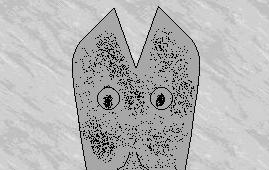Somebody at Queen’s Park made a joke about no-fault auto insurance and, faster than you can say, “Where’s the ambulance?” the Insurance Bureau of Canada started taking out full page newspaper advertisements explaining why the government shouldn’t even think of such a thing. There’s somebody who hasn’t read Freud’s Humour and Its Relationship to the Unconscious.
To ensure that their point was made, the insurance companies enlisted the aid of the Canadian Bar Association, another humour-impaired organization. The lawyers took up the cause because a no-fault insurance scheme would put many of them out of business (which, I suppose, makes their business that of finding fault). Worse, if the public realized that lawyers were not necessary to the smooth administration of justice in this area, there was no telling where they might prove unnecessary next.
The lawyers argued that no-fault insurance would interfere with a person’s right to sue (you know the guarantee: life, liberty and the pursuit of a fat court settlement). Do we really have a “right to sue?” Is it an important way of getting justice? I offer the following case studies for your consideration:
CASE STUDY ONE: a car jumped a sidewalk, scared three behavioural psychologists from Pittsburgh, a woman who had just gotten her hair dyed burnt ochre and two Labrador retrievers and hit Jerry Vermillion. Vermillion flew a block and a half before landing on a statue of Thomas Jefferson planting the American flag on Iwo Jima. He spent 11 months in hospital recovering from a fractured everything. Vermillion sued the driver, Brad Smith, for damages.
Smith, represented by the law firm Keon Henderson Ullman MacMillan Bloedel Sacco & Vanzetti. Entered the court with 12 lawyers, eight clerks, five interns and 17 paid experts. Half the witnesses were forced to wait outside the courtroom. He immediately got a continuation on the grounds that he needed more time to prepare his defense.
Vermillion was represented by his brother-in-law, who had to devote most of his time to defending himself at disbarment hearings.
Smith’s lawyers prepared by having psychological profiles of the prospective jurors made. They felt confident that they could dismiss those with a bias against the upper class, lawyers or people who flossed regularly; in short, stacking the jury with businessmen. Once it had been selected, they held a mock trial with a jury with a similar make-up to the one they would face in court to determine which defence had the best chance of success.
They determined that the best defense was that Vermillion, for nefarious purposes of his own, had thrown himself in front of Smith’s car. To this end, Smith’s expert witnesses included engineers who were prepared to testify under oath that the damage to his car could not have been made in a normal accident, psychologists who were prepared to testify under oath that he hated his mother and astrologers who were prepared to testify under oath that it just wasn’t his day.
Vermillion’s lawyer prepared a bag lunch.
A mistrial was declared when, during the second day of testimony, it was disclosed that the judge in the case, Maximillian Gunderblat, went fishing with Smith two or three times a year. Six months later, a second judge took himself off the case when it was shown that he and Smith had belonged to the same frat house at College. Another four months passed before it was determined that all of the judges in the state had some personal connection to Smith, and seven more months were needed to file and get a court date in another state.
Meanwhile, Smith invited several of his friends, who also happened to be influential newspaper publishers and television news producers, to dinner at his estate to ensure that his side of the story would be given fair treatment in the press.
Finally, a week before the trial, Vermillion’s lawyer was disbarred; unable to afford another lawyer, he was forced to drop the suit.
CASE STUDY TWO: Steelworkers Jerry “Mason” Djarr and Michael Finsbury get into an argument about a recipe for Bouillabaisse in their local bar. Although they frequently argued there, Djarr took particular exception to a comment about the ancestry of his opthalmologist, and proceeded to sue Finsbury for, “being a dumb mug what don’ know nuttin’!” Finsbury countersued, claiming that his character had been defamed and his feelings had been badly, badly hurt.
The trial eventually erupted into a barrage of lawsuits, countersuits and bitter accusations in the press. The clerk sued Djarr because he took exception to a comment about his Brooklyn accent. A woman following the trial at home sued Finsbury because the sight of his face on television had caused her children irreparable psychological distress. He was also sued by the custodial staff of the courthouse for dropping his cigar ash on their carpets. He sued his own lawyer for passing him notes he couldn’t read. Djarr sued one local newspaper because he didn’t like its comics section. The judge sued everybody in the courthouse for wasting his time.
The tangled web of litigation is expected to be resolved in time for the great grandchildren of those involved to benefit.
Law is not necessarily justice. Before we accept an inherent “right to sue,” perhaps we should consider the pitfalls of a litigious society.
As for no-fault insurance, which compensates everybody but takes away the larger settlements for the lucky few who receive them, well, it may not be law, but it may be justice.


